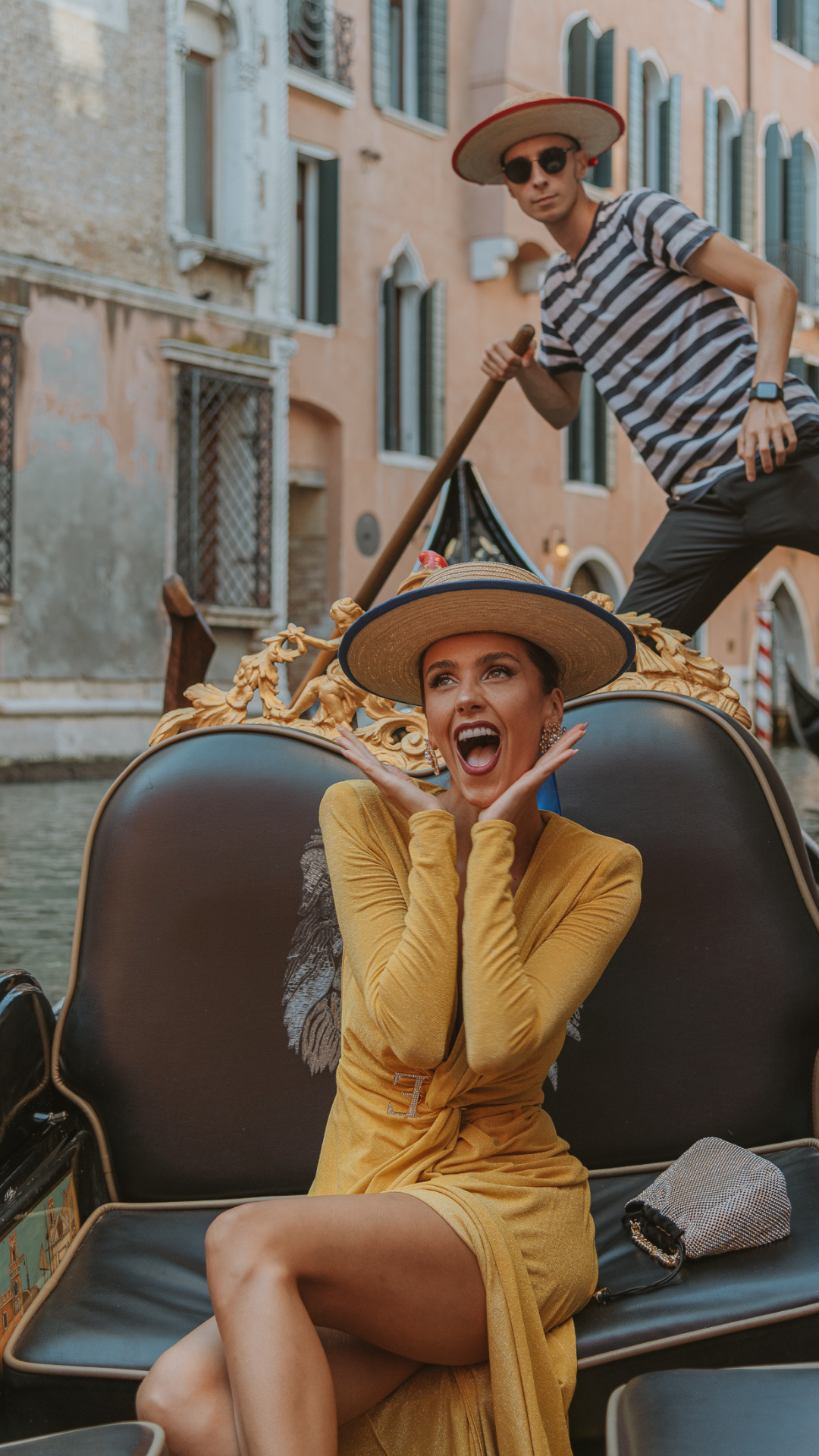Way to make a Travel > World Tours > Venice romantic
VENICE, ITALY – Venice is a city that charms and captivates the historic flagship of a mighty fleet of islands in the lagoon, the most photogenic city in the world. To discover Venice romantic true character you should first see the main sights : The Grand Canal, St Marks Square, the Doges Palace. But then take time to explore the picturesque postcard backwaters with their hidden squares and tiny churches. Venice has a secret side that is only accessible by water. Once afloat, you enter another world, viewing the city as it was intended to be seen, through fleeting glances inside antique residences, hidden gardens, and boatyards with gondolas awaiting repair. This is where the true spirit of Venice romantic resides.



Flights to and from Venice
Most major European cities provide direct flights to Venice, and New York has a daily flight. Regular flights arrive at Venice Marco Polo Airport, whereas the city’s second airport, Treviso, primarily serves as a charter connection. Trains to Venice arrive at Venetian Santa Lucia Station, which is close to the Grand Canal entrance.
Venice Time zone
Venice is one hour ahead of Greenwich Mean Time (GMT+1), but from late March, when clocks are set forward one hour, to late October, Italian summer time (GMT+2) is in effect.
Venice Public transport

Vaporetto
The public transportation system ACTV operates the vaporetto, also known as the waterbus. The main routes operate every 10 to 20 minutes throughout the day. Services are reduced in the evenings, particularly after midnight. Fast diretto boats cost more than ones that stop at each landing step. You can purchase a ticket for each journey at a ticket office. If you want to make ten or more trips within three days, purchase a 72-hour ticket or a ‘blochetta ‘ of ten or more tickets that can be used at any time. Before boarding, all tickets must have their dates stamped by the automatic machine on the pier. If you are staying for a week, you can purchase a weekly ‘abbonamento’ from the ticket offices.
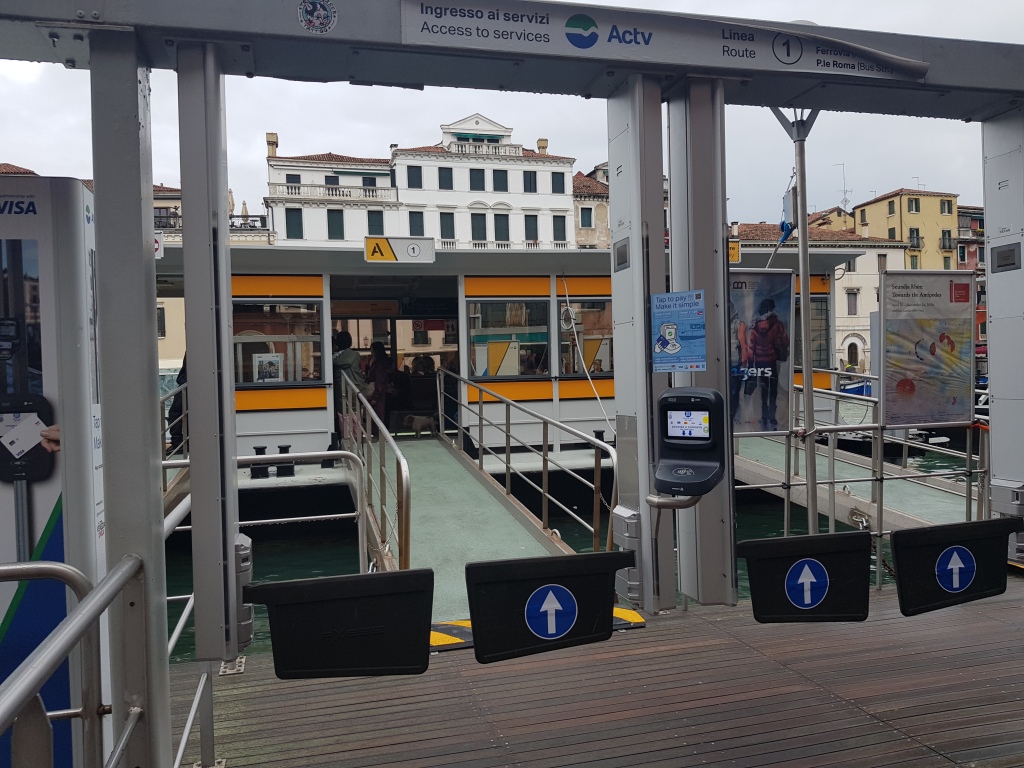
The main ACTV waterbus routes operate every 10 to 20 minutes throughout the day. Services are reduced in the evenings, particularly after midnight. The fast “Diretto” boats cost more than those that stop at every dock. You can purchase a ticket for each journey at a ticket office.
If you want to make ten or more trips within three days, purchase a 72-hour ticket or a ”blochetta” consisting of ten or more tickets that can be used at any time. Before boarding, all tickets must have their dates stamped by the automatic machine on the pier. If you are staying for a week, it is preferable to purchase a weekly ”abbonamento” from the ticket offices.
Gondola
A Gondola is undoubtedly the most enjoyable means of transport in the city, but also the most expensive. Fares are governed by a tariff for a 45 minute trip, with a surcharge for night trips after 8 pm, but, as gondoliers are notorius for overcharching, it is often easiest to establish terms by ordering a gondola via your tour representative or hotel staff. For a memorable outing, take a two-hour gondola ride down the Grand Canal with a picnic supper on board. Alternatively , consider a cruise operated during the summer months by ‘flotilas’ of gondolas packed with tourists and entertained by singers – providing an ideal opportunity to explore the waterways at an affordable price.
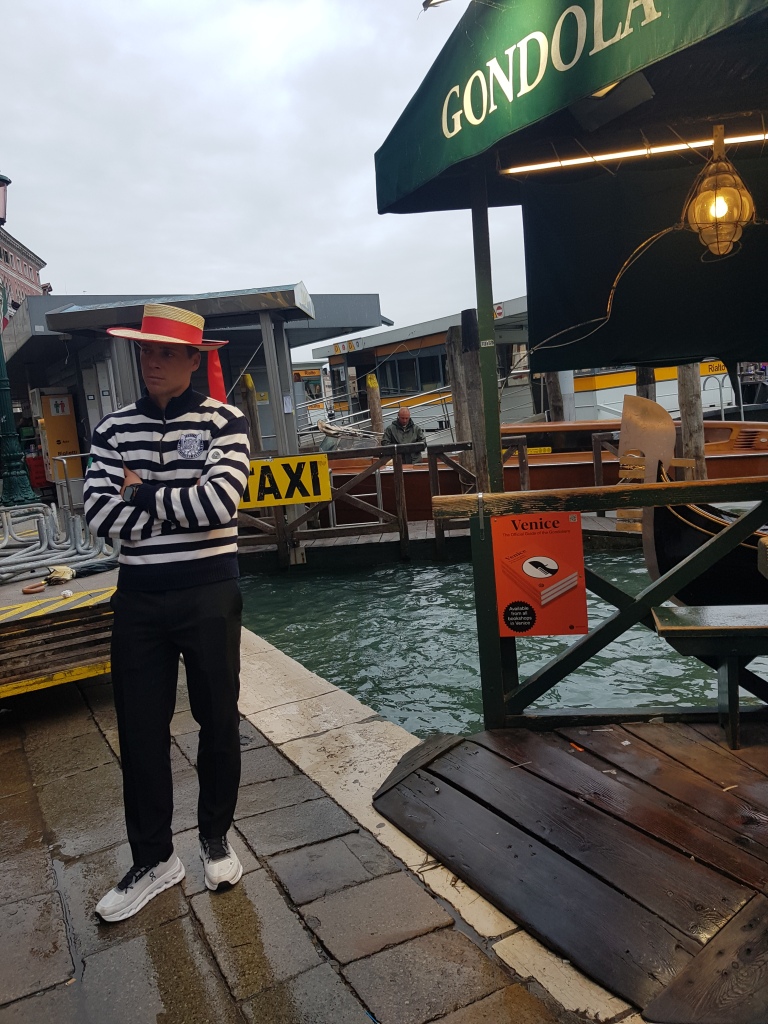

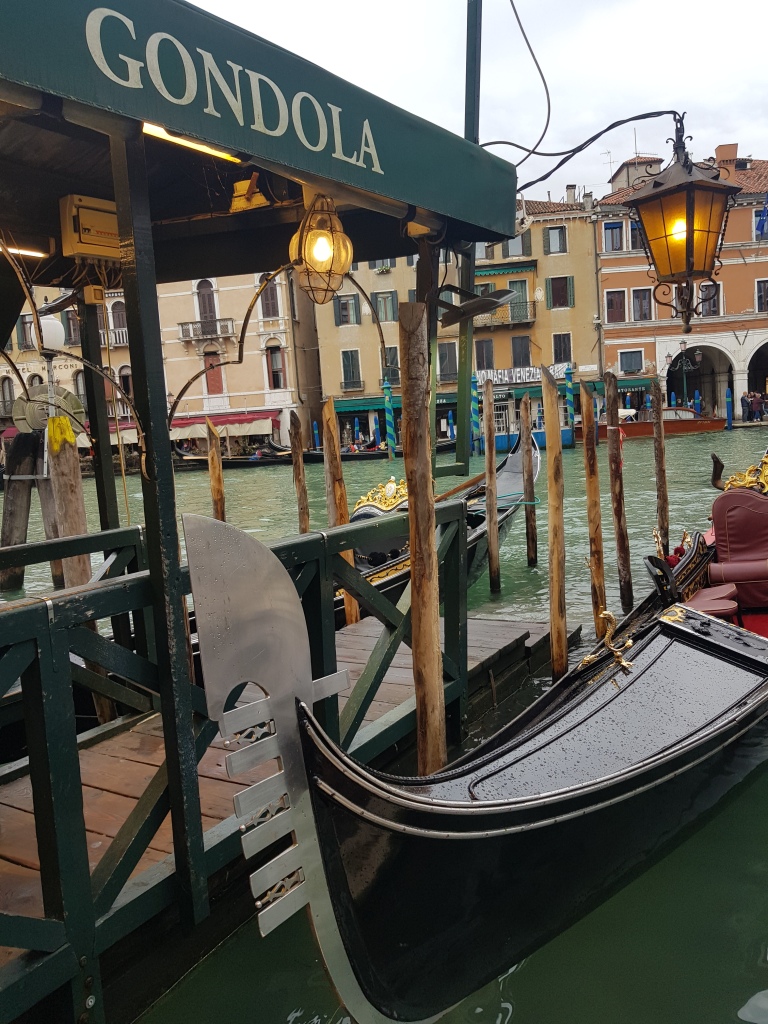
Two hundred years ago, there were 10,000 gondolas in Venice. Although the nobility preferred horses to boats in the early Middle Ages, gondolas were adopted as a respectable means of transport by the noble class from the 14th century, when horses were banned from the streets of Venice. Boats became the means of transport around the islands of the lagoon. To navigate the endless sandbanks, the boats were flat and the captains stood to watch. Today, there are only 500 gondolas left, used only by tourists.
Gondolas were first recorded in 1094. In the 18th century there were 14000 in use. Today, there around 400, all made to the same design, 10.87 m in length, with a maximum width of 1.42 m. The hulls asymmetrical, 24 cm wider on the left than on the right side in order to assist with steerage. Each Gondola is made out of 280 parts, made from eight different woods: fir, cherry, walnut, larch, mahogany, oak, lime and elm, and according to 16th-century law, are all painted with seven layers of black lacquer.
Traghetto
Traghettos are ferry gondolas that cross the Grand Canal between special piers at seven different points, providing a vital service for pedestrians. They are indicated by yellow street sign, illustrated with a tiny gondola symbol. The very reasonable fare is paid to the gondolier on embarkation.
Venice sightseeings
Doge’s Palace
The Doge’s Palace, or Palazzo Ducale, is the seat of the Venetian government and the residence of the ruling Duke, or Doge. It was the most powerful half-acre in Europe for 400 years. The Doge’s Palace was built to demonstrate the power and wealth of the Republic and to remind all visitors that Venice was the number one city. The Doge lived with his family on the first floor, close to the centers of power. From his once magnificent rooms, follow the one-way tour through the public rooms on the top floor, ending the visit with the View over the Bridge of sights and the Doge’s Prison. The place is lined with masterpieces by Veronese and Tintoretto.
St.Mark’s Square
This large square is surrounded by living historical buildings and sites: St. Mark’s Basilica, the Doge’s Palace, the Campanile and the Correr Museum. The square is full of music, lovers, pigeons and tourists during the day and is your private rendezvous with the Venetian Middle Ages late at night. Europe’s gratest dance floor is the romantic place to be. At first glance, in fact, many of Venice’s most famous buildings are neither churches nor palaces, but ones built for a specific purpose in the city’s daily life. St. Mark’s Square is about the first place in Venice to visit.

St. Mark’s Basilica
Built in the 11th century to replace a previous church, this basilica in classic oriental architecture emphasizes Venice’s link to Byzantium. It is ornamented with the spoils of war, similar to a Venetian architectural trophy chest. The inside shines seductively with golden mosaics and tinted marble. The saint’s bones have been stored here since around 830 AD.
Get lost in the labyrinthine alleys and backwaters of the city or visit the outlying islands for a taste of Venetian life off the main tourist drag. Take the lift up to top of the Campanile or San Giorgio Maggiore for breathtaking views. Watch the World go by from the terrace of a Venetian classic, Harry’s Dolci on the Giudecca, whilst sipping on a Bellini cocktail. Stroll along the southern shore of the Dorsoduro, with its boathouses, bar, and cafes. Go at dusk, when Venetians take their passeggiata, or promenade.
End your day Venetian-style with an ice-cream or a digestif in one of the city’s countlesscafe-ringed squares.
Campanile
This towering bell tower replaced a smaller lighthouse that was originally part of the castle that guarded the Grand Canal’s entry. To see the greatest views of Venice, take the elevator 90 meters to the top of the clock tower.
San Giacomo di Rialto The Church of San Giacomo di Rialto is located at the foot of the Rialto Bridge, among the fruit and vegetable market stalls. The city’s oldest church, believed to have been founded in the early 5th century, has produced many architectural and decorative curiosities, including a rare brick dome, oversized Baroque altarpieces and, most notably, a large 15th-century 24-hour clock on the façade. . It faces the market square, once used by Venetian bankers, money changers and insurance brokers.



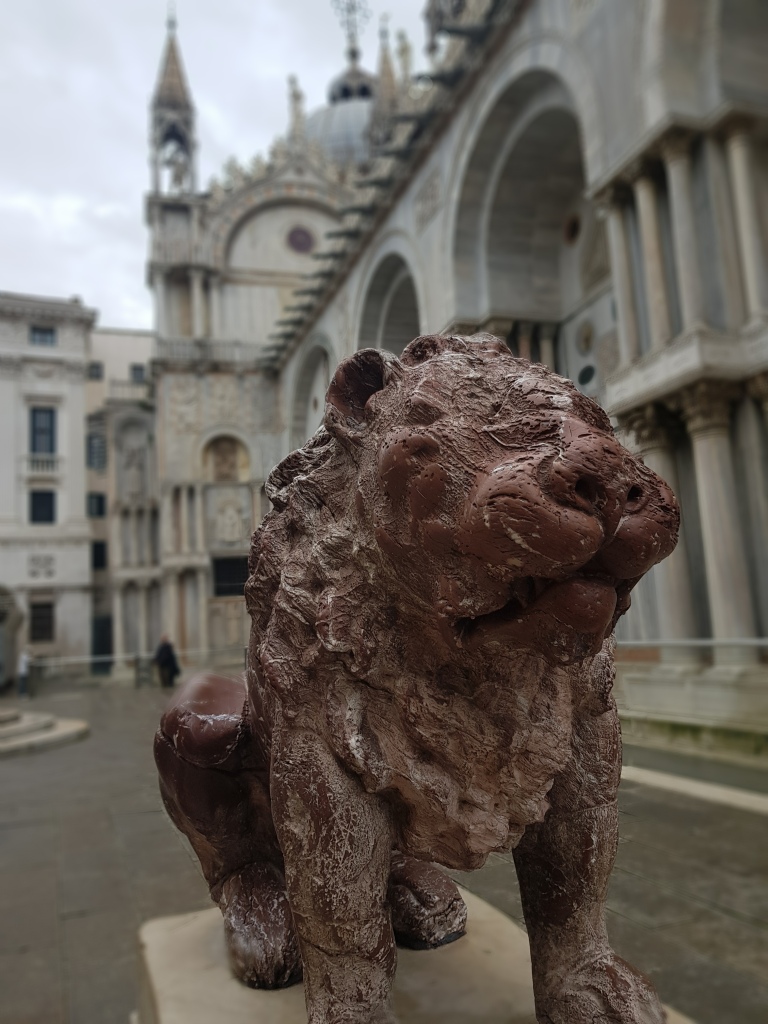
Arsenale
Arsenale the geat dock-yard in the east of the city, was the naval power-house of the Venetian Empire. Surrounded by 15-th century castellated walls and entered through a monumental archway and Watergate, it was where the galleys that conquered the Mediterranean and dominated it for centuries were built and based. The interior is now mostly deserted dockside and bare walls, but the gates which are guarded by stone lions brought from Macedonian the 17th and 18th centuries can easily be admired from the “campiello” outside.
Clock Tower
The Tower stands above the arch leading to the Mercene shopping street close to the Basilica San Marco. Built at the end of the 15th century, its remarkable, brightly enameled clock face and its digital clock are linked with ”automata”, which attracts crowds in the Piazza.
Rialto Bridge
Of Venice’s 408 bridges, only three cross the Grand Canal. Of these three bridges, the Rialto was the first. The original Rialto Bridge, dating from 1180, was a platform supported by boats tied together. It linked the political side of Venice with the economic center Rialto, which takes its name from ‘riva alto’ – (high bank). When Venice was Europe’s economic superpower, it was where bankers, brokers, and merchants conducted their daily business. The Rialto has been long a symbol of Venice. Aristocratic inhabitants built magnificent palaces just to be near it. The poetic Lord Byron swam to it all the way from Lido Island. And thousands of proposals have been sealed with a kiss as the moon rose over La Serenissima.
Cafes, Bars and Restaurants in Venice
Cafés have long played an important part in Venetian life, particularly in the exchange of news and gossip. In the Piazza San Marco, which opened in 172o, was a center of political dissent during Austrian rule in the 19th century, while the Austrians patronized Quadri Piazza San Marco on the opposite side of the square and their orchestras still compete for attention. Both are expensive and the cost of a cup of coffee at either should be regarded as the price of an experience of street theater. In cold weather, the interior of Florian all faded plush and murals, is redolent of the 19th century. All the major hotels have bars and the most celebrated in the city is Harry’s Bar near the San Marco vaporetto pier. Venice ‘goes to bed early’ and not long after 22:00 hours, the alleys are quiet and only few bars remain open. Each district has its own little restaurants and there will always be several near each bed-and-breakfast hotel. Tourist menus with dishes at less than the à la carte prices are usually satisfactory but are unlikely to include the more interesting specialities. In restaurants of any class it is permissible to order pasta as a main course, so reducing the cost of meal. It can generally be assumed that the bill will include a service charge, but Venetians generally add an extra 10 to 15 per cent if it is not included.



It’s easy to see why Napoleon called Piazza San Marco the most elegant drawing room in Europe.
Shopping in Venice
Venice has always been a city for shopping. Over the centuries its merchants made the city’s fortune by selling wholesale the merchandise of the East to fellow Europeans. There are no noteworthy malls in Venice, so shopping should be combined with sightseeing throughout the city. The most fashionable shopping areas are in and to the north and west of the Piazza San Marco and on and around the Rialto bridge, the busiest along the wide Strada Nuova leading from the railway station in to the heart of the city. All over Venice attractive little shops can be found, sometimes combined with workshops making the goods on sale. While the windows of clothes shops and shoe shops will catch the eye with their displays of the latest fashions from Rome and Milan, visitors may want to take home something that is peculiarly Venetian.
Shops accept payments with credit cards and will pack and mail or freight purchases to their final destination.
As can be seen in the paintings of Venetian life in past centuries, richly colored and textured fabrics were always favored. They still are, and a new process of printing partravon fabric with traditional Venetian designs has produced a new range suitable for curtains, loose covers, cushion covers and bedspreads. There are so many smart clothes shops in Venice that the fashion-conscious can spend a day window-shopping instead of looking at Old Master painting. For eight centuries, Murano has been the glass-making island. Glass shops and showrooms abound in the city itself but when a visitor is invited to watch glass-blowing there, it will only be a demonstration in a back room: for the real thing. Murano must be visited and there, too, are the most comprehensive showrooms. Take time in choosing glass and do not be deflected by sales-talk that has been polished over the centuries.
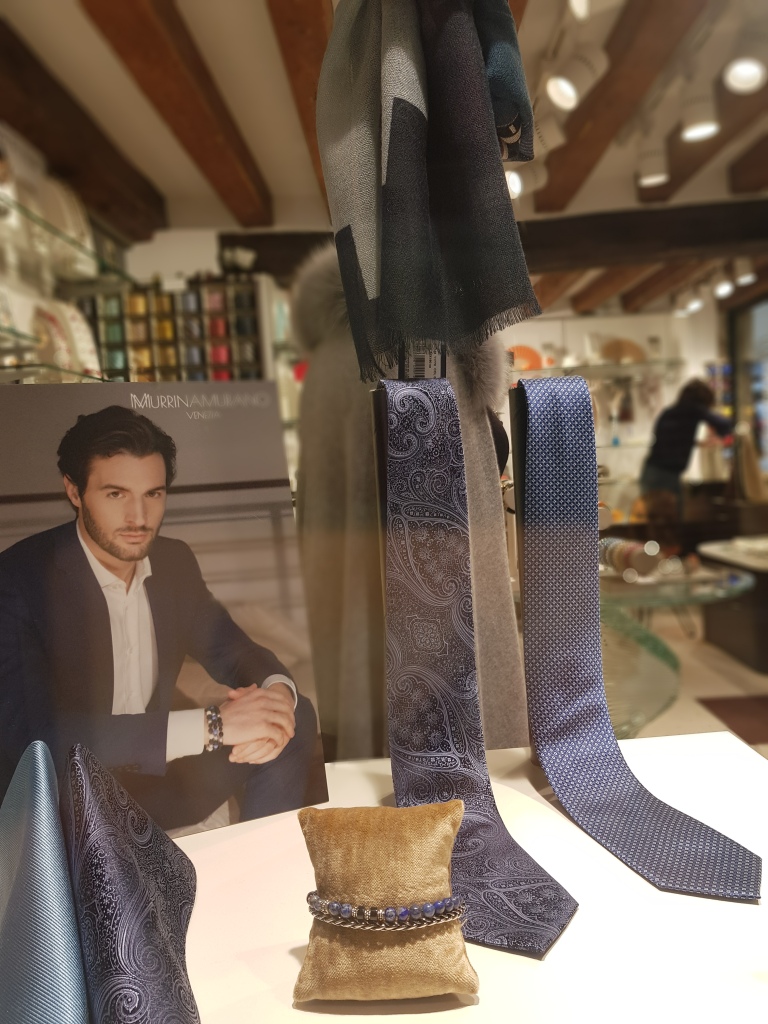

Stalls selling silk scarves and ties and leather goods are set up in either end of the Rialto Bridge, upon which are two parallel rows of little shops selling jewelry, leather goods, silks and shoes. Stalls are also found in the Strada Nuova and those selling souvenirs congregate along the Riva degli Schiavoni, these include artists mass-producing views of Venice and offering instant caricatures.



Culture, entertainment and nightlife in Venice
Venice enjoys a rich cultural life throughout the year. Apart from the Fenice Theater, which presents opera in winter and concerts and recitals all year, there are three other main theaters: L’Avogaria, Goldoni and Ridotto. There are several cinemas, though films are always shown in Italian. Throughout the year special exhibitions are presented in the principal museums, at the Doges Palace, on the island of San Giorgio and at the Palazzo Grassi. Often they are advertised with enormous banners in dull Venetian red inscribed in gold and hanging from the bridges over the Grand Canal. Summer is the season of festivals. The Biennale modern art exhibition takes place every other year through the summer, focused on the 40 permanent pavilions in the Giardini Publici and galleries around town. The Festival of Dance is held in July and the International Film Festival is held on the Lido in late August early September.
Venice is a remarkably quiet city but for light sleepers there is hazard of church bells in the early morning and the hooters and bellowing diesels of barges on the wider canals. For most visitors the chance of such disturbance is an acceptable risk.
Venice Dress code
Venetians themselves, are formal in their dress, except at carnival time, and expect visitors to look neat, if not formal in their city. Beach clothes always look wrong in the city and are forbidden in most churches. Jackets and ties are expected in the grander hotels and restaurants, although informal clothes are allowed if presentable. It should be noted that formality is expected at the opera or theater. In summer, when it is usually hot, there is much more informality and open-necked shirts are usually wear. In spring and autumn, it can rain occasionally for days so better to be prepared. In winter, it can be very cold indeed, and it can snow, so warm clothes and gloves are essential.
BHI recommended tours in Venice
Scattered across nearly 500 square km of the Venetian lagoon are some 40 islands. Half of them are now deserted, while those still inhabited may be thriving communities or isolated institutions — a prison, a hospital or a religious retreat — and a few are used for public or private recreation. Enough of them can be visited to add another dimension to a holiday in Venice. The main islands are well serviced by vaporetto, the Venetian water taxi.
Visit Murano
Murano was one of the firs islands to be inhabited during the barbarian invasions, some claim that its former name Amuranium is derived from that of one of the ports of Altino. Today, Murano is famous all over the world for being the home to the age-old craft of glassblowing. Many centuries ago, the furnaces were concentrated on the island, which was almost uninhabited, in order to prevent the risk of damage from fires, given that most of the factories were built of wood.
Visit Burano
The fishermen’s and lace-makers island with a population of about 5000 lies more than 8 km to the northeast of Venice. Burano is composed of a group of four smaller islands, connected to one another by bridges. It still preserves an olden-age atmosphere, with its narrow, winding streets, houses painted in bright colors and canals full of boats and fishermen. While Murano is workaday and slightly disheveled, Burano is neat and clean and its multicolored cottages lining little canals make it a perfect subject for photographs. Burano’s character has been shaped by its industries, the robust way of life of its fishermen and boat builders and the delicacy of its lace makers skills. It was on these islands, in the fifteen hundreds, that the art of lace making was born, which overtime made the island famous all over the world. Usually women can be seen making lace outside the doors of their cottages and sell their products at stalls in local shops. There are few buildings of note but the church of San Martino erected in the 16th century, contains a painting of the Crucifixion by the elder Tiepolo and boasts the most alarmingly tilted campanile of them all.

Photo Source by Viator – Murano Island Glass Factory Tour
Visit Lido
This is the only one of the Venetian islands to have roads, and its buses, cars and trucks are imported by ferry from the mainland. A little to the southeast of Venice, it is just over 11 km long and 1 km wide, covering the largest sandbank between the lagoon and the Adriatic. With a population of about 20000 it is essentially a seaside holiday resort and is crowded in summer, when it is also host to the International Film Festival. Its most notable building is a short distance across the water, the 16th-century fortress of Saint Andrea, built on the little island of Vignole to command the main entrance to the lagoon.
Visit Lido di Jesolo
This seaside resort is along the Adriatic coast to the east of Venice. It has a good beach, caters principally for package holidays, and is reached by bus from Venice.
The 3-star Hotel Iris Lido di Jesolo is located in Piazza Mazzini, a popular meeting spot for young people who enjoy visiting the different squares in the square and the interior. It is 1.7 kilometers from Palaturismo and has 42 rooms with city views.
Visit Padova
The nearest large town to Venice with a population of a quarter of a million, Padova can be reached by train, bus car or by boat. The latter, the Burchiello and its rival the Ville del Brenta, sail between April and October from San Marco at about 9:00 hours, cross the lagoon and cruise up the Brenta Canal, which is, in fact a river. Times and fares of this Tour excursion are available at the hotel reception and concierges desks and at the tourist information offices. Stopping at several magnificent Renaissance villas on its banks and for lunch at Il Burchello restaurant, guests arrive at Padova between 18:00 and 18:30, and the 37 km return journey to Venice is made by bus or train. Padova is better known as a Venetian university city since the 15th century and is rich in buildings with an original architecture.

Visit Torcello
This peculiar little island has an atmosphere all of its own, time seems to have been stand still and one can see the little houses scattered between the vegetable gardens and vineyards. The island’s only inhabitants are a handful of fishermen and the contrast with the rest of the lagoon is abyssal. The most attractive church is that of Our Lady of the Assumption, which was built in 639 A.D on the model of the Ravenna churches and was latter modified and decorated with the spectacular mosaics that still today take the visitors’ breath away.
Take a boat along the grand canal by day, to marvel at its majestic water-lapped ‘palazzi‘ and gaily painted mooring poles, or by night to catch glimpses of the grand illuminated interiors.
Swimming in Venice
The Lido is the bathing-place of Venice but much of its seven-mile beach is privately owned, and a hefty fee is payable on each stretch for changing facilities and deck chairs. The hire of beach huts is particularly expensive. The only public swimming pools in Venice is that at the Hotel Cipriani and that is reserved for those staying, or buying pricey non-residents tickets. There are good bathing beaches on the mainland east of Venice between the landing stage at Punta Sabbioni from San Zaccaria and Lido di jesolo, which is connected to Venice by a bus service from the Piazzale Roma.
Venice Travel Tips
- The sunniest and hottest months are June July and August. It is advisable to use a strong sunblock and avoid the midday sun;
- Tap water is generally safe to drink unless marked ‘acqua non potabile‘;
- Venice is a popular destination for older travelers although, due to the limited transport systems, seniors must be prepared for lots of walking. @bookinghotelin can provide you with the best deals available for operators who specialise in holidays for senior citizens;
- Many Venetians speak a little English, but they really appreciate it when foreigners make the effort to speak Italian, even if poorly. It is relatively easy to learn some basic concepts, as words are pronounced as they are written;
- To help prevent crime it is advisable not to carry more cash than needed while going around the town. Pickpockets often happen in markets, tourist sights and crowded places;
- Public toilets are located around the major tourist sights with sign directions to get there. Cost varies from 1 to 1.5 Euros;
- Citizens of EU and some other countries can receive medical treatment in Italy with the appropriate documentation, but for all other visitors private health insurance is always advisable and essential. Dental treatment is expensive in Italy but should be covered by private health insurance;
- The power supply is 220 volts, but is suitable for 240-volt appliances. Sockets accept two-round pin Continental-style plugs. US visitors should bring a voltage transformer;
- The leading international car rental companies have offices at Marco Polo airport and it is advisable to book a car in advance either direct or through a travel agent’;
- Check the airport departure schedule on the day before leaving to ensure the flight details are unchanged.
- Part of the enjoyment of repeated visits to Venice is in trying different hotels and among those recommended for atmosphere and situation as much efficiency and convenience are these half dozen
Booking hotel in Venice
There are about 200 hotels in Venice and, this being Italy, most of them are well run. A few may have become slatternly through over-confidence induced by a non-stop flow of package tourists, but their principal handicaps age. Most Venetian hotels now serve only breakfast and only the grandest offer a cooked breakfast. A number has good restaurants but, as a general rule, half-board should be avoided because this nearly always involves the evening meal and so hampers the enjoyable exploration of the city’s restaurants. Book hotel in Venice through tra…..

Lone travelers are particularly at risk since single rooms are the most cramped. One solution for those accustomed to travelling alone and staying in the more expensive hotels is to choose one that is less expensive and book a double room.
Part of the enjoyment of repeated visits to Venice is in trying different hotels and among those recommended for atmosphere and situation as much efficiency and convenience are these half dozen:
Ateneo Hotel — quiet hotel, tucked away in a hidden alley located near the Fenice Theatre, Bel Sito e Berlino is a @bookinghotelin recommended hotel for those wishing to be in the social mainstream just a short step away and opposite a peculiarly Venetian church with a facade carved with battle rather than Biblical scenes.
Castelo Hotel — quiet hotel, tucked away in a hidden alley located in Castelo area is a @bookinghotelin recommended hotel for those wishing to be in the social mainstream just a short step away fro Rio del Palazzo
Hotel Aquarius is popular hotel with warm and inviting atmosphere with exposed bricks, wood details, and handcrafted artwork by local artists.
Now that the city is busy at Christmas and Easter and the February carnival has been reintroduced, there are fewer times of the year when it can seem empty. These currently are November, the first three weeks of December, January and March, when some hotels may close. The busiest months are July, August and September.
Baglioni Hotel Luna This intensely Venetian pension has a magnificent salon on the ‘piano nobile’ with paintings, plaster work and chandeliers off which passages lead to comfortable bedrooms.
👉For latest holiday best hotel offers in Venice visit our Partner booking links here⤵️
Trivago compares and displays different offers from many booking sites.
Promotion:



Keywords: #Veniceromantic @bhivenice @bookinghotelin @waytomakeatravel #bookdirectly @bookdirectly @promotions #bookdirectly #booking hotel in venice @hotels in venice #accommodation in venice #veniceFlights
Other simiar stories: Fashion Capital Island of Dreams Cosmopolitan Mykonos
